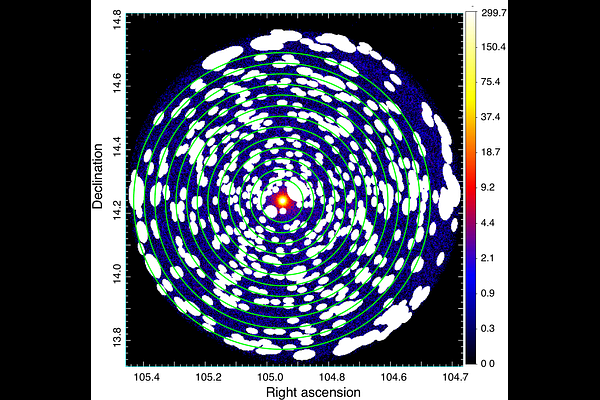Detection of extended X-ray emission surrounding PSR B0656+14 with eROSITA

Detection of extended X-ray emission surrounding PSR B0656+14 with eROSITA
Shu Niu PMO, Qiang Yuan PMO, USTC, Shui-Nai Zhang PMO, USTC, Lei Lei PMO, USTC, Li Ji PMO, USTC, Yi-Zhong Fan PMO, USTC
AbstractExtended very-high-energy $\gamma$-ray emission from middle-aged pulsars as revealed recently by several groundbased $\gamma$-ray experiments has strong implication on the transport of high-energy particles in the interstellar medium surrounding those pulsars. The $\gamma$-ray emission is widely believed to be produced by high-energy electrons and positrons accelerated by the pulsar wind nebulae when scattering off the interstellar radiation field via the inverse Compton process. Multiwavelength counterparts of the $\gamma$-ray halos are expected to be present, which are, however, not observed yet. In this work, we report for the first time the detection of extended X-ray emission from $\sim 0.2^{\circ}$ radius region of PSR B0656+14 with eROSITA. The spectrum of the emission can be described by a power-law function with an index of $\sim3.7$. The fluxes decrease with radius faster than the prediction of the particle diffusion and synchrotron radiation in a uniform magnetic field, suggesting the existence of a radial gradient of the magnetic field strength as $\sim r^{-1}$. The magnetic field strength in the X-ray emitting region is constrained to be $4-10~\mu$G.